2023.08.01.4
Files > Volume 8 > Vol 8 No 1 2023
Evaluation of hydroxymethylfurfural content in commercial and artisanal bee honey from Los Ríos-Babahoyo
Enrique José Salazar Llorente 1, Hugo Javier Alvarado Álvarez2, Jamileth Marianela Castro Cano 3, Byanka Margarita Sosa Arias 4, Sonia Alexandra Puga Lascano5*
1,2,3,4,5 Facultad de Ciencias Agropecuarias, Universidad Técnica de Babahoyo, Km 7.5 Vía Babahoyo. Ecuador
Available from:http://dx.doi.org/10.21931/RB/2023.08.01.4
ABSTRACT
Hydroxymethylfurfural (HMF) is a compound that is produced after heat treatment of honey; that is, they are not present in the initial raw materials and can present a potential health hazard; they are known as chemical processing contaminants. This compound is an indicator parameter of the quality of honey produced spontaneously. Its concentration increases with time and other factors, such as improper heat treatment during processing, storage temperature and mode of transportation. The objective of this research is focused on evaluating the content of HMF present in 6 types of bee honey, 3 commercial brands and three artisanal brands; the honey was from eucalyptus and citrus flowering, and the place where the honey was acquired is in the Province of Los Ríos, since being a geographical area with abundant flora, the primary pollinators are bees (Apis Mellifera). In addition, the honey was heated at different temperatures and time intervals to evaluate whether Hydroxymethylfurfural increases when heat is added to the honey. The present work was carried out at the Technical University of Babahoyo; the commercial and artisanal bee honey were acquired between 1 and 5 days before the assay. For HMF analysis, a UV spectrophotometer was used, as specified in INEN 1637 standards, to determine the absorbance of the standard sample at 284 and 336 nm. The HMF values obtained for the three commercial brand honey and the artisanal brand honey are within limits allowed by INEN 1572 Technical Standard, which is 4_mg HMF/100_g of honey (40 mg HMF/kg of honey) as a maximum limit. The mean values ranged from 0.08 to 1.77 mg HMF-/g honey, while the honey subjected to heating had mean values ranging from 0.08 to 4.43 mg HMF/100_g honey. A high HMF content was determined, which exceeded the maximum limit, leading to the conclusion that commercial and artisanal honey does contain Hydroxymethylfurfural. Still, in small quantities, it is important to use good handling and preservation methods to prolong the product's shelf life.
Keywords: spectrophotometer ; Apis Mellifera ; radiation
INTRODUCTION
Beekeeping is an activity responsible for breeding and caring for bees, with the objective of obtaining products derived from the extraction of nectar that the bees make and that is later placed in their hives. The main products obtained from beekeeping are honey, propolis, wax and royal jelly; many of these products have been used for medicinal, nutritional and curative purposes for many years 1.
Beekeeping is an activity of great value because it stimulates the economy by being an additional source of income for thousands of rural Ecuadorian families. Its importance in agricultural production is also centered on the participation of bees in pollination, a process that guarantees harvests 2.
In Ecuador, one of the main activities that have been carried out for years is beekeeping, which has been characterized as being carried out on a small scale, in rural areas, by small and medium beekeepers. The boom of beekeeping in Ecuador occurred in 1993, with 38500 hives. According to the last National Cadastre of Beekeeping Operations published by the Ecuadorian Agency for Quality Assurance in Agriculture (Agrocalidad), Ecuador, by the end of 2014, presented a total of 12188 hives and 902 beekeepers; with a concentration of beekeepers in the provinces of Pichincha, Loja, Imbabura and Manabí, these provinces together would represent 60% of beekeeping production in the Country 3.
The beekeeper and especially the beekeeping industry use thermal treatments to achieve fluidity and homogeneity for the honey packaging process or in the eventual blending of honey from different origins to achieve a pleasant honey to the consumer's sight and delay the crystallization process; these treatments and inadequate storage affect honey quality 4.
The beekeeper is in charge of beekeeping practices; his work depends on the time of the year since, during spring and summer, the bees are at their peak of activity. In winter, conditions must be prepared for the following season. When bees are foraging (during the flower pollination period), beekeepers must take care of population control and the subsequent extraction of honey 5.
Honey is considered a substance originated by bees from the transformation of the nectar they collect in nature to feed the members of the hive. However, since time immemorial, humans have benefited from it as part of their diet due to its innumerable nutritional and medicinal benefits 6.
Bee honey is the most represented product in Ecuadorian beekeeping with 85%; beeswax is produced in 5%, pollen in 3%, propolis in 6%, royal jelly in 1%, and Apitoxin in 0.1%. Approximately 90% of the bee farms in Ecuador are located in rural areas, and the remaining 10% are in urban areas 7.
The Codex Alimentarius defines bee honey as "a naturally sweet-tasting substance produced by Apis mellifera bees from the nectar of plants or the sweat of living parts of plants or from the excretions of plant-sucking insects." It further states that "honey sold shall not contain any additional ingredients, including food additives or additives other than honey" 8.
In bee honey and fruits, fructose is the primary sugar found naturally and in small amounts in some vegetables. Fructose is like glucose, a monosaccharide sugar and the sweetest of all-natural carbohydrates; one molecule of glucose and fructose together produce table sugar (sucrose) which is half 9.
Glucose is a monosaccharide, a simple sugar molecule, freely present in foods such as fruit and honey. This form of sugar is the primary source of energy that ensures the proper functioning of the organism 10.
The consumption of bee honey has excellent benefits for people's health; it has antioxidant and anti-anemic qualities. Products derived from bee honey are currently booming in the use of alternative medicine. Apitoxin (bee venom) has analgesic and anti-inflammatory properties, which are defined as apitherapy 11.
Pure or artisanal honey is the one that goes directly from the honeycomb to the jar, beekeepers sometimes temper it to a maximum of 30 degrees and filter it to remove traces of bees, flowers, etc., but it does not undergo any other process that may alter its nutrients. Processed or commercial honey is subjected to high temperatures and pressures that spoil its beneficial properties 12.
Commercial honey is processed with high-temperature heat followed by rapid cooling. Pasteurization of honey prolongs its shelf life in liquid form, improves its appearance and also kills yeast cells that could change the flavor of the honey. Store-bought commercial honey undergoes excessive processing, heated to about 70 degrees Celsius; due to this, commercial honey loses all its natural characteristics 13.
The melliferous bee or honey bee is an insect of the aphid family; the honey bee group consists of only five species of bees; this species is native to Europe, Africa and part of Asia; honey bees are vital for pollination and development of crops for agriculture, livestock and food. Bees pollinate eighty-four percent of food crops. At least five of every ten things we eat have had a direct relationship with bees by 75 to 80% 14.
The Apis mellifera bee, also known as the honey bee, is one of the most recognized bees among the bee species for its productive yields and honey storage. It has wax-producing glands located in the abdomen with which they make nests using poor-quality waxes or waxes that the workers of the hive 15 secrete.
The characteristics of honey are determined by various laboratory analyses such as physicochemical, sensory and pollen content. The latter is an indicator of the geographical and botanical origin of the honey, and helps determine whether it is multi-floral -when the honey is composed of various plant species- or monofloral 16.
HMF contains a hydroxyl group, an aldehyde and a furan ring, so its possible transformations include reactions such as oxidation, hydrogenation, hydration, decarbonylation or esterification 17.
HMF can be formed spontaneously by different processes, for example, by Maillard reactions, also called non-enzymatic browning or chemical browning reactions, caramelization reactions and acid-catalyzed dehydration of hexoses. In foods highly concentrated in sugars, such as honey, the most feasible reaction is caramelization, although when honey is subjected to processing, Maillard reactions may also be Maillard 18.
Hydroxymethylfurfural (HMF) is an indicator of honey freshness and invertase and diastase enzyme activities. HMF is a compound (aldehyde) formed by the dehydration of sugars, especially fructose. This formation of HMF occurs naturally over time and is accelerated if honey is subjected to high temperatures in the processes of extraction, homogenization, etc. 19.
Compounds generated after a thermal process, i.e., which were not present in the original raw material and may pose a potential health risk, are called processing chemical contaminants. Recently, two new chemical processing contaminants, acrylamide and Hydroxymethylfurfural, have aroused great interest in the scientific community due to their toxicological effects if found in the high range 20.
The spectrophotometer is an instrument used in chemical analysis to measure the radiation absorbed or transmitted by a solution containing an amount of the analyte. In spectroscopy, the term light applies not only to the visible form of electromagnetic radiation but also to the ultraviolet (UV) and infrared (IR) forms, which are invisible. In absorbance spectrophotometry, the ultraviolet and visible regions are used 20.
MATERIALS AND METHODS
The methodology was carried out in the Phytopathology Laboratory of the Technical University of Babahoyo in 6 types of honey, three commercial brands and three artisanal brands to determine the quality of the same, the honey of commercial bees and Artisanal honey acquired five days before. In contrast, artisanal honey was accepted the same day freshly harvested.
This methodology was carried out in two parts:
First: For the analysis of HMF, a UV wave spectrophotometer was used to measure the absorbed radiation; this study was based on the NTE INEN 1637 standards. To spectrophotometrically determine the content of Hydroxymethylfurfural (HMF), in which the absorbance varies depending on the content of Hydroxymethylfurfural (HMF). The product is caused by the overheating of honey from bees due to bad practices in its handling and inadequate storage.
Reagents
Potassium ferrocyanide solution: 15g of potassium ferrocyanide K4Fe (CN)6 was dissolved. 3H2O, in 100 cm3 of distilled water.
Acetate solution of zinc: 30g of zinc acetate Zn (OAc)2 was dissolved. 2H2O, in 100 cm3 of distilled water.
Sodium bisulfate solution (0.20%): 0.20 g of sodium bisulfate NaHSO3 was dissolved in 100 cm3 of distilled water.
Experimental procedure
The method used to determine HMF in honey is described below:
5 g of honey was weighed into a beaker and transferred to a 50 cm3 volumetric flask with approximately 25 cm3 of distilled water.
0.50 cm3 of potassium ferrocyanide solution was added with a pipette and mixed well; 0.50 cm3 of zinc acetate solution was added, brought to a volume of 50 cm3 with distilled water. The first 10 cm3 of the filtrate is discarded. Two test tubes (18 x 150 mm) were taken, and 5 cm3 of the filtrate was added to each.
In one tube, 5 cm3 of water (sample) was added, and to the other tube that will serve as a reference, 5 cm3 of NaHSO3 solution was added, mixing well.
The absorbance of the standard sample is determined against the absorbance of the reference sample at 284 and 336 nm in a 1 cm cell.
If the absorbance (A) is more significant than 0.6, the standard sample was diluted with water and also the reference sample with NaHS03 in the same proportion. The absorbance A was determined and, for the calculations, considered the dilution made.
Calculations
The content of Hydroxymethylfurfural in honey was determined as follows:

Being:
A1 = sample absorbance at 284 nm.
Factor 14.97 = (126/16.830) (1000/10) (100/5)
126 = mole molecular weight of HMF.
16,830 = molar an of HMF at 284 nm
a = molar absorbability for HMF. 21
One commercial honey and one artisanal honey were used, which were subjected to thermal processes at different temperatures for different time intervals to determine at what temperature the HMF is increasing and if it exceeds the INEN standard's limits 4mg. HMF/100g of honey (40 mg HMF/Kg of honey), would not be suitable, and its quality would be affected; once the heating was done, the same methodology mentioned above in the first part was carried out to evaluate the HMF.
Experimental procedure
The thermal process to which the honey was subjected is detailed below:
100 g of commercial bee honey 1 was weighed and placed in a water bath at 25 °C for 1 h, at 40 °C for 3 hours, at 60 °C for 3 hours and at 80 °C for 3 hours.
100 g of Artisanal bee honey 1 was weighed and placed in a water bath at 25 °C for 1 h, at 40 °C for 3 hours, at 60 °C and at 80 °C for 3 hours.
Calculation of the standard deviation
The standard deviation is a numerical index of the spread of a data set (or population), that is, it is an average of the individual deviations of each observation from the mean. The greater the standard deviation, the greater the dispersion of the results obtained. The standard deviation is a parameter that accounts for the dispersion of the data obtained. For a sample it is calculated with the following formula:

Pearson correlation
Pearson's correlation coefficient is a test that measures the statistical relationship between two continuous variables. If the association between the items is not linear, then the coefficient is not adequately represented. Pearson's correlation can take values from +1 to -1. A value of 0 shows no correlation between the two variables. A value greater than 0 indicates a positive correlation. As the value of one variable increases, the value of the other variable also increases. A value less than 0 indicates a negative correlation; as one variable's weight increases, the other's value decreases.
The Pearson correlation coefficient formula is as follows:

Where:
"x" is equal to variable number one, "y" belongs to variable number two, "zx" is the standard deviation of variable one, "zy" is the standard deviation of variable two, and "N" is the data number.
• If r = zero, there is no association or correlation between the two variables.
• If 0 < r < 0.25 = weak correlation.
• If 0.25 ≤ r < 0.75 = intermediate correlation.
• If 0.75 ≤ r < 1 = strong correlation.
• If r = ±1= perfect correlation. 22
RESULTS
The results obtained in the first part of the methodology to evaluate Hydroxymethylfurfural in commercial and artisanal honey were the following:
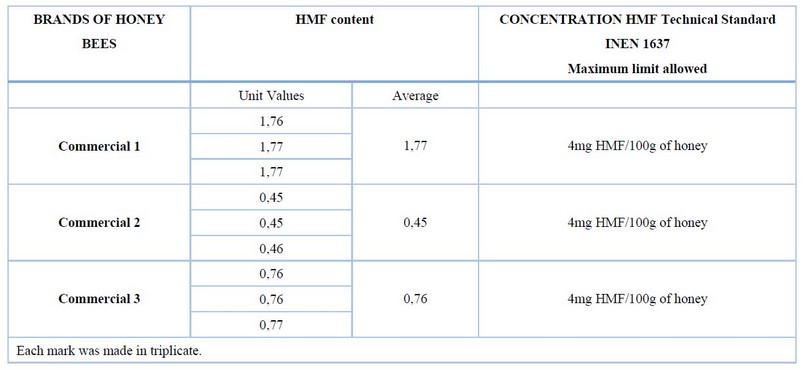
Table 1. HMF content is present in commercial honey.
In this table, it is observed that the commercial honey brands underwent a study in triplicate to have more exact values, these values for Hydroxymethylfurfural are within the reference value (4 mg HMF/g of honey), established in the INEN 1572 standard, commercial-type honey has been purchased in a supermarket in the City of Babahoyo at a conservation temperature at room temperature.
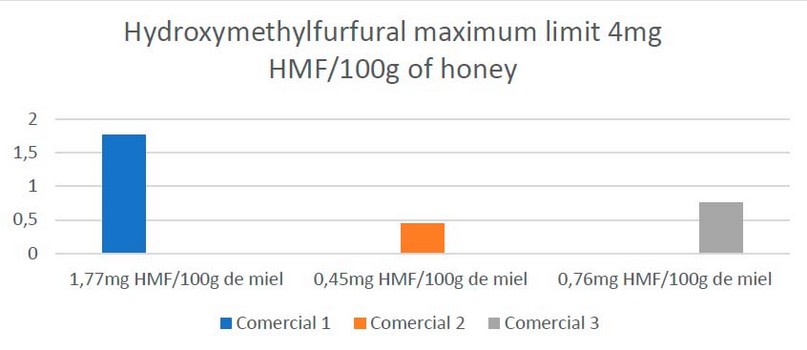
Figure 1. Statistical bars of HMF content in commercial honey.
This graph shows that commercial honey 1 has a high content of HMF, more than commercial honey 2 and 3, although it does not exceed the reference value (4 mgHMF/g of honey), established in the INEN standard. 1572, it can be determined that commercial honey does contain HMF in small amounts after processing.
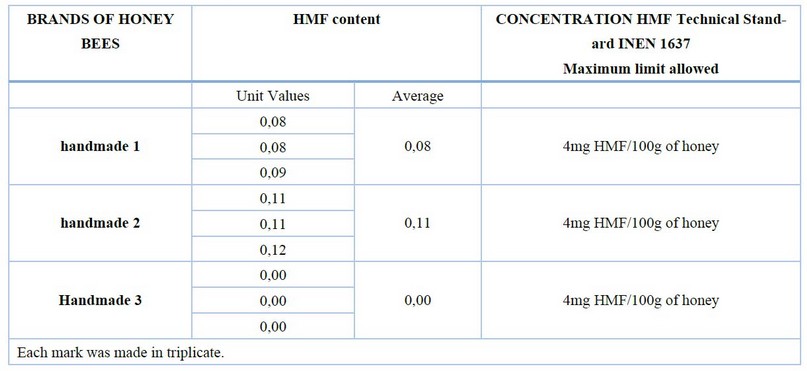

Table 2. HMF content is present in artisanal bee honey.
In this table 2, it is observed that for the brands of artisanal honey, a study was carried out in triplicate to have more exact values; these values for Hydroxymethylfurfural are within the reference value (4 mg/g of honey), established in the INEN 1572 standard, while artisanal honey 3 does not register the presence of HMF, two of the artisanal honey were acquired in the Canton Ventanas, and the other in the City of Babahoyo at a temperature of environmental conservation.
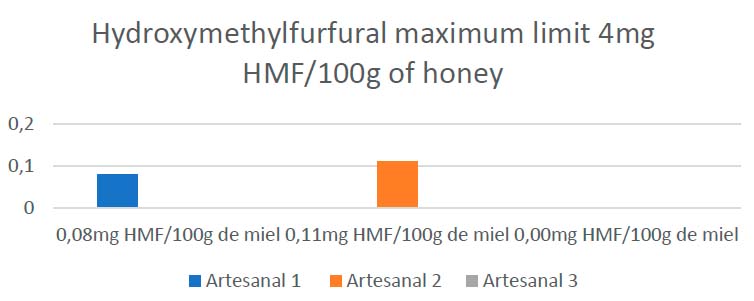
Figure 2. Statistical bars of HMF content in artisanal honeys
This graph shows that artisanal honey 2 has a high content of HMF, more than artisanal honey 1. However, it does not exceed the reference value (4 mgHMF/g of honey), established in the INEN 1572 standard; while artisanal honey three did not present any level of HMF in its content, it can be determined that certain artisanal honey does contain HMF in small amounts, perhaps due to poor handling and the temperature at which it is stored, artisanal honey three was newly harvested the day the experiment was going to take place.
The second part of the results was where two kinds of honey were heated in a water bath, applying different temperatures for different time intervals.

Table 3. Data of the concentration of Hydroxymethylfurfural in the different thermal treatments.
This table 3 shows that commercial honey 1 subjected to a temperature of 25 ºC for one hour is within the levels established in the standard, and no variation was obtained; at 40 ºC for three hours, the HMF increases; at 60ºC for three hours, the HMF continues to increase, and at 80ºC it exceeds the ranges established by the INEN standards of 4mg HMF/100g of honey.

Table 4. Hydroxymethylfurfural concentration data in the different heat treatments.
This table 4 shows that artisanal honey 1 subjected to a temperature of 25 ºC for one hour is within the levels established in the standard, and no variation was obtained; at 40 ºC for three hours, the HMF increases, at 60ºC, the HMF continues to increase, and at 80ºC it exceeds the ranges established by the INEN standards of 4mg HMF/100g of honey.
Xi is the value obtained from each measurement, x is the arithmetic means of the measurements, and n is the number of measures made. In our case, the sizes of each of the analyzed honey have been carried out in triplicate. The standard deviation calculation was made in commercial samples 1 and artisan 2, in which the temperatures are varied (40 ºC, 60 ºC and 80 ºC), keeping the exposure time at a constant temperature for (3h).

Table 5. Calculation of the standard deviation (s) in the commercial 1 and artisanal 1 samples.

Table 6. Data for Pearson's correlation coefficient in commercial honey 1.

For the analysis of results, according to the Pearson correlation coefficient = 0.9557, it can be said that the variables X and Y present a strong correlation. Since the value of r is positive, it indicates a positive relationship between the variables (growth in one variable is associated with development in the other variable).
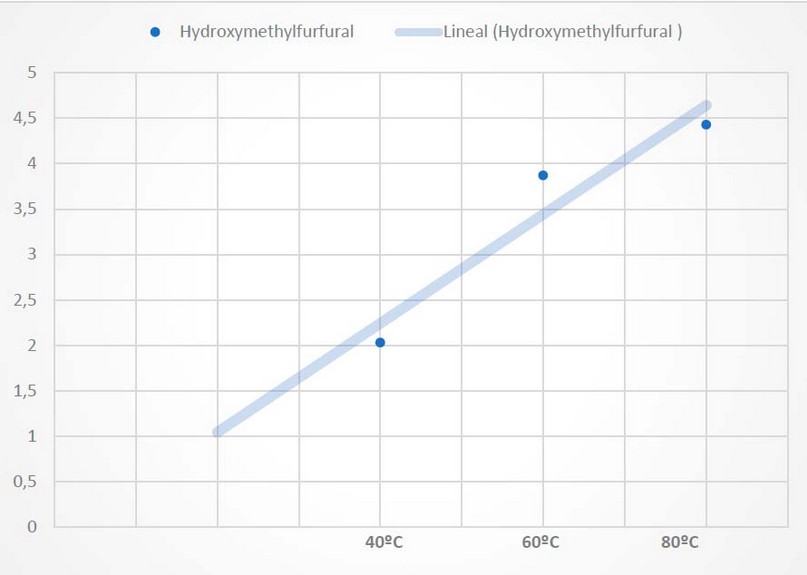
Figure 3. Dispersion diagram between variables
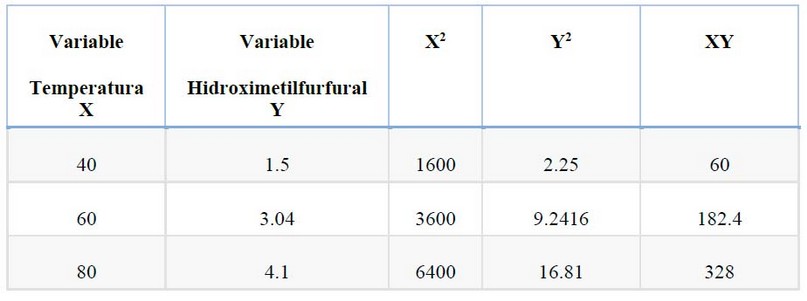
Table 7. Data for Pearson's correlation coefficient in artisanal honey 1.
For the analysis of results, according to the Pearson correlation coefficient = 0.9944, it can be said that the variables X and Y present a strong correlation. Since the value of r is positive, it indicates a positive relationship between the variables (growth in one variable is associated with development in the other variable).
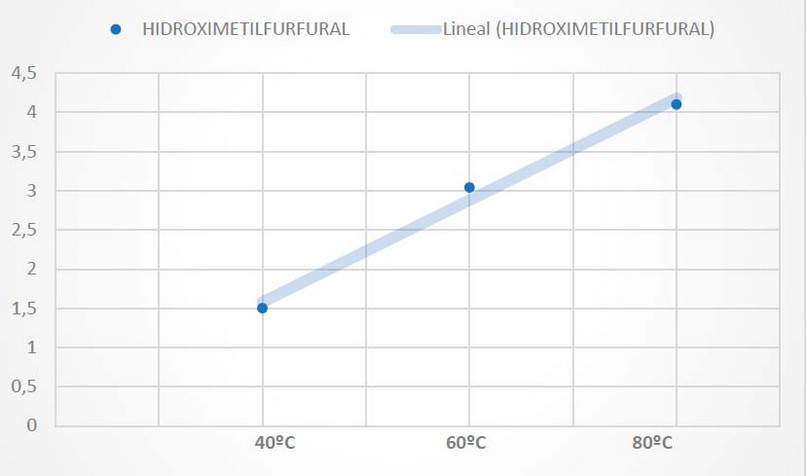
Figure 4. Dispersion diagram between variables
DISCUSSION
Once the research is completed, the non-presence of HMF for recently harvested artisanal honey 3 agrees with what is mentioned in various literature 23, indicating that HMF is not a standard component in honey. Fresh or just harvested.
The relatively low HMF values obtained in the three types of commercial honey and in the two types of artisanal honey also agree with their values, considering that HMF increases spontaneously with storage at high temperatures around 20°C to 25°C. It is these conditions that have not accelerated the increase in HMF.23
According to (Villar et al., 2019) 24, they agree with the results obtained when the honey was heated at different temperatures and time intervals when the honey samples were exposed to different temperatures; it was observed that the amount of HMF increased progressively as the temperature increased. In addition, if honey is exposed to very high temperatures for extended periods, it exceeds the legal limit of (4mg HMF/100g honey). 24 The amount of Hydroxymethylfurfural formed in honey depends on the temperature to which it is exposed and the time of exposure. 25
Néstor Velásquez et al.26 tell us that heating, such as temperature change, poor handling of packaging, transport and storage, are factors that affect the rate of formation of HMF (Hydroxymethylfurfural) in honey; the content increases spontaneously with time, a notable difference was also observed in the increase of HMF in the honey that was subjected to a prolonged heating time.26
CONCLUSIONS
The honey that is sold commercially and artisanally, if they comply with the Ecuadorian Standard INEN 1 572 regarding the content of HMF, establishes a maximum limit of 4mg HMF / g of honey from bees.
According to the results obtained, the commercial honey presented a higher content of Hydroxymethylfurfural than the artisanal honey. However, they are within the limit of the norm. In contrast, one artisanal did not show any level of hydroxymethylfurfural content, for what is determined is that when the honey is freshly extracted from the honeycomb does not offer these levels. It is determined that hydroxymethylfurfural increases due to exposure to high temperatures for long periods in its processing, transportation and storage.
It was also determined that when honey is subjected to different temperatures, hydroxymethylfurfural increases, depending on the time and temperature to which the product is exposed. Therefore, it is considered that honey subjected to processing should not exceed 80 ºC for more than 3 hours because HMF increases and exceeds the permitted limits. In the statistical analysis, it was possible to determine that the temperature is strongly correlated with the rise of Hydroxymethylfurfural in the honey.
It should be considered that honey must be stored between 20-25 ºC so that the HMF remains within the range and its production is very slow.
Acknowledgments: My thanks to the Technical University of Babahoyo for their guidance and direction in all the studies carried out, and to Ing. Enrique Salazar for the advice and help to crystallize this research will be of significant contribution to the population in general.
Conflicts of interest: There are no conflicts of interest
REFERENCES
1. Torres, A., Chimbo, J., & Vargas, J. (2022). Apicultura y bioeconomía: La miel de abeja como alternativa económica sostenible para pequeños productores. Revista Semilla del Este, pág. 3.
2. Vélez, P. (06 de 12 de 2019). Ministerio de Agricultura y Ganadería. Obtenido de https://www.agricultura.gob.ec/ii-foro-apicola-del-litoral-reunira-a-mas-de-200-productores-en-los-rios/
3. Granda, R. (19 de 12 de 2017). Análisis del potencial de la actividad apícola como desarrollado socioeconómico en sectores rurales. Quito, Ecuador. Obtenido de https://repositorio.usfq.edu.ec/bitstream/23000/7106/1/135301.pdf
4. Ruiz, D., Pilamunga, G. I., & Fonseca., E. (2020). Afectación térmica de la miel de abeja en una metodología alternativa, monitoreando hidroximetilfurfural, número de diastasa y vitamina C. Conciencia Digital, pág. 5.
5. Piedra, M. (22 de 02 de 2022). La Vanguardia. Obtenido de https://www.lavanguardia.com/comer/materia-prima/20211228/5027/limon-propiedades-beneficios-valor-nutricional.html-.
6. Carrillo, E., Rojas, L., & Noboa, T. (2021). Determinación de la demanda insatisfecha de miel de abeja en el cantón Morona, provincia de Morona Santiago. Conciencia Digital, pág. 3.
7. Toro, R., Hidalgo, V., Muñoz, R., & Robles, R. (2020). Análisis de las falencias del sector apicultor en la provincia del Guayas (Ecuador). Revista Espacios, pág. 3.
8. Velásquez, D., & Goetschel, L. (2019). Determinación de la calidad físico-química de la miel de abeja. Enfoque UTE, pág. 2.
9. Acurio, J. (14 de 01 de 2020). Food facts for healthy choices. Obtenido de https://www.eufic.org/es/que-contienen-los-alimentos/articulo/que-es-la-fructosa-y-es-mala-para-ti/ Apicultura y miel. (12 de 02 de 2018). Obtenido de https://apiculturaymiel.com/miel/la-miel-componentes-y-tipos/
10. Barhum, L. (30 de 12 de 2021). Medical News Today. Obtenido de https://www.medicalnewstoday.com/articles/es/diabetes-tipo-2-y-miel
11. Vivanco, I., William, R., Blanca, V., & Verónica, M. (2020). El mercado de la producción de miel de abeja en la provincia del Guayas (Ecuador). Revista Espacios, pág. 2.
12. Martín, C. (16 de 07 de 2022). Clínicas Aleria. Obtenido de https://clinicasaleria.es/diferencias-entre-miel-pura-y-miel-procesada/
13. BEHONEY. (21 de 04 de 2019). Obtenido de https://behoney.es/miel-cruda-vs-miel-comercial/#:~:text=La%20Miel%20Comercial%20es%20la,el%20sabor%20de%20la%20miel.
14. Beevoo. (11 de 02 de 2021). Obtenido de https://beevoo.net/blog/abejas-meliferas-quienes-son-y-por-que-es-importante-saber-reconocerlas/
15. Arteaga, C. (2022). Problemas Sanitarios en Apis mellifera en la región Sierra del Ecuador. Riobamba, Ecuador. Obtenido de http://dspace.espoch.edu.ec/bitstream/123456789/16285/1/17T01700.pdf
16. Biodiversidad Mexicana. (11 de 04 de 2022). Obtenido de https://www.biodiversidad.gob.mx/diversidad/alimentos/mieles
17. Rodríguez, L. (2021). Oxidación de alcohol furfurílico, furfural y 5-hidroximetilfurfural con H2O2 y catalizadores. Ciencias Experimentales, pág. 9.
18. Martínez, J. (09 de 07 de 2018). Parámetros de la calidad de la miel. influencia de las condiciones del procesado. Valencia. Obtenido de https://riunet.upv.es/bitstream/handle/10251/107469/MART%C3%8DNEZ%20-%20PAR%C3%81METROS%20DE%20CALIDAD%20EN%20LA%20MIEL.%20INFLUENCIA%20DE%20LAS%20CONDICIONES%20DEL%20PROCESADO.pdf?sequence=1&isAllowed=y
19. Montiel, L. (2017). Recomendaciones para la calidad de miel: humedad, HMF y otros temas. Red para el desarrollo de la agricultura familiar de Latinoamérica y el Caribe, pág. 5. Piedra, M. (20 de 05 de 2022). Maes Honey. Obtenido de https://www.maeshoney.com/que-es-la-apicultura/
20. Jiménez, V. (2016). “Evaluación de Hidroximetilfurfural en diferentes marcas de miel de abeja, comercializadas en el supermercado de Guayaquil”. Guayaquil, Ecuador. Obtenido de http://repositorio.ug.edu.ec/bitstream/redug/12966/1/VICTOR%20JIMENEZ.pdf
21. Vilaña, A. (2013). Miel de abejas. Determinación del contenido de Hidroximetilfurfural (HMF). Quito: Norma Técnica Ecuatoriana (NTE INEN).
22. Fiallos, G. (2021). La Correlación de Pearson y el proceso de regresión por el Método de Mínimos Cuadrados. Revista Científica Multidisciplinar, pág. 6-9.
23. Jiménez, V. (2016). “Evaluación de Hidroximetilfurfural en diferentes marcas de miel de abeja, comercializadas en el supermercado de Guayaquil”. Guayaquil, Ecuador. Obtenido de http://repositorio.ug.edu.ec/bitstream/redug/12966/1/VICTOR%20JIMENEZ.pdf
24. Villar, M., Villar, P., Cobo, S., Rodríguez, D., & Serrano, M. (2015). Determinación de hidroximetilfurfural en mieles como parámetro indicador de la calidad de las mismas. Revista de Ciencias de la Universidad Pablo de Olavide, pág. 3.
25. Vargas, M. (2006). Efecto del tratamiento térmico temporal de la miel de abeja sobre la variación de su calidad. Ambato, Ecuador.
26. Velásquez, N. (2013). “Evaluación de diferentes tiempos de calentamiento de la miel de abeja (Apis mellifera) para retardar su cristalización y determinar los niveles de HMF (Hidroximetilfurfural), en la asociación de apicultores del sur Occidente de Guatemala”. Guatemala. Obtenido de https://core.ac.uk/reader/35293030
Received: 26 September 2022 / Accepted: 15 October 2022 / Published:15 February 2023
Citation: Salazar Llorente E J, Alvarado Álvarez H J, Castro Cano J M, Sosa Arias B M, Puga Lascano S A. Evaluation of hydroxymethylfurfural content in commercial and artisanal bee honey from Los Ríos-Babahoyo. Revis Bionatura 2023;8 (1) 4. http://dx.doi.org/10.21931/RB/2023.08.01.4
